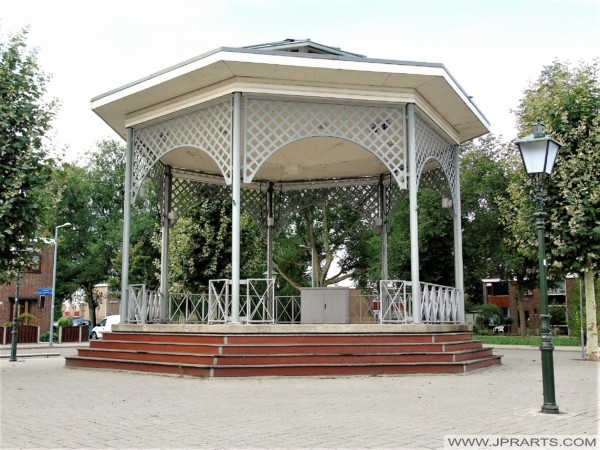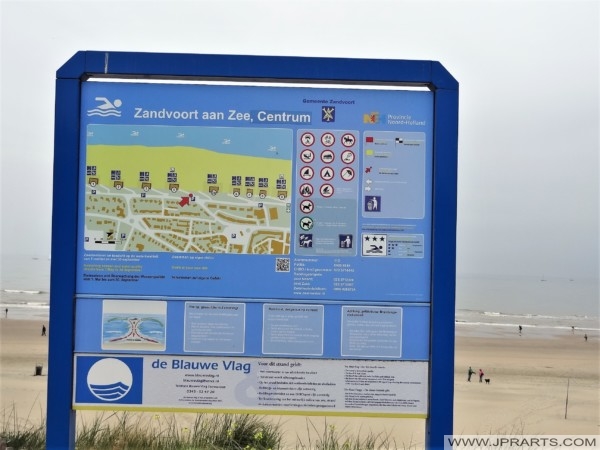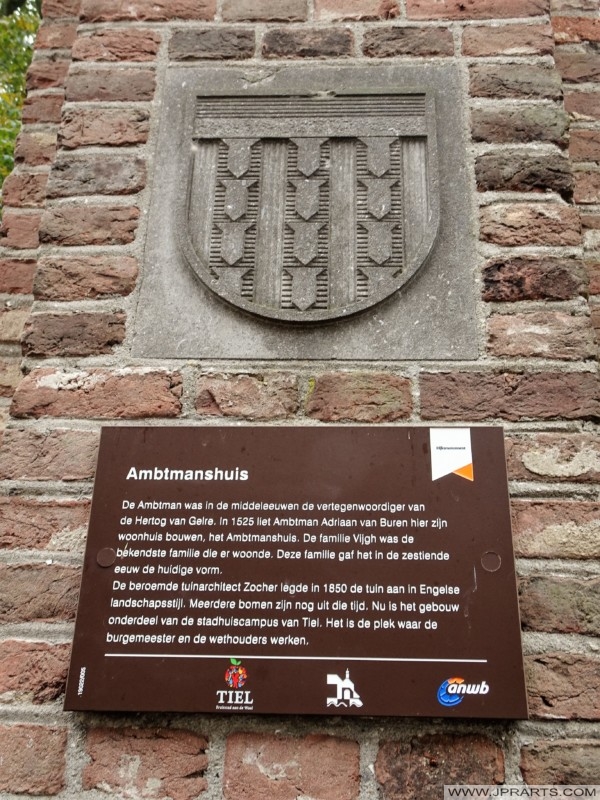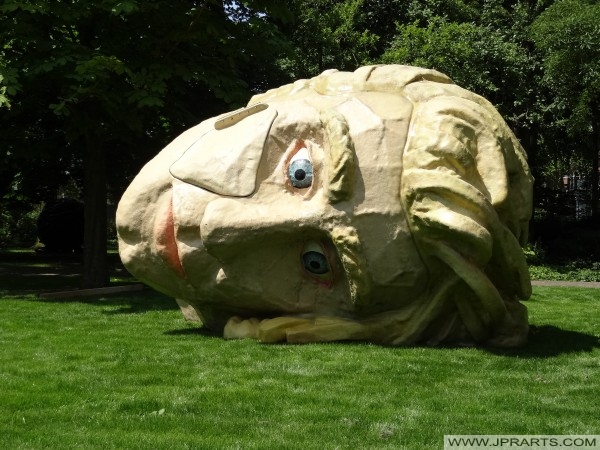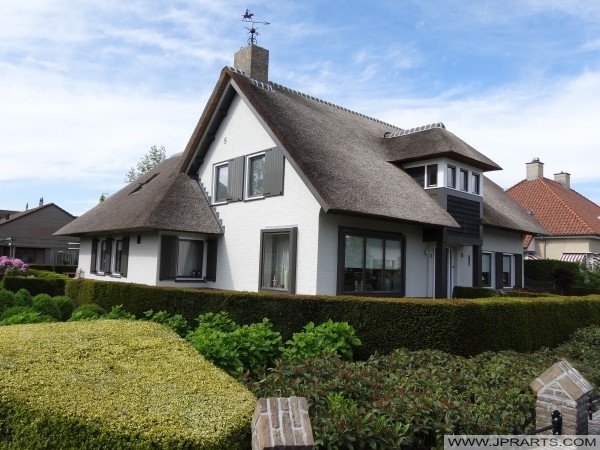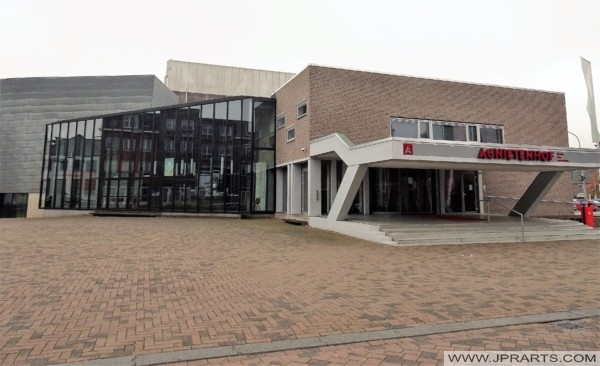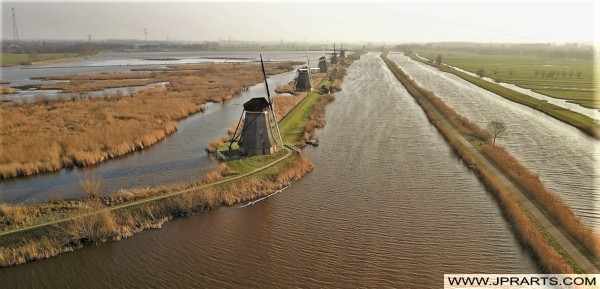Bandstands are actually a specific type of kiosk: a small detached building or pavilion. These usually have a roughly circular floor plan, with a regular polygonal structure, usually with a simple but nicely finished build. A bandstand not only provides a point of interest in the landscape, but also improves the acoustics of the music and gives the opportunity to shelter in bad weather.
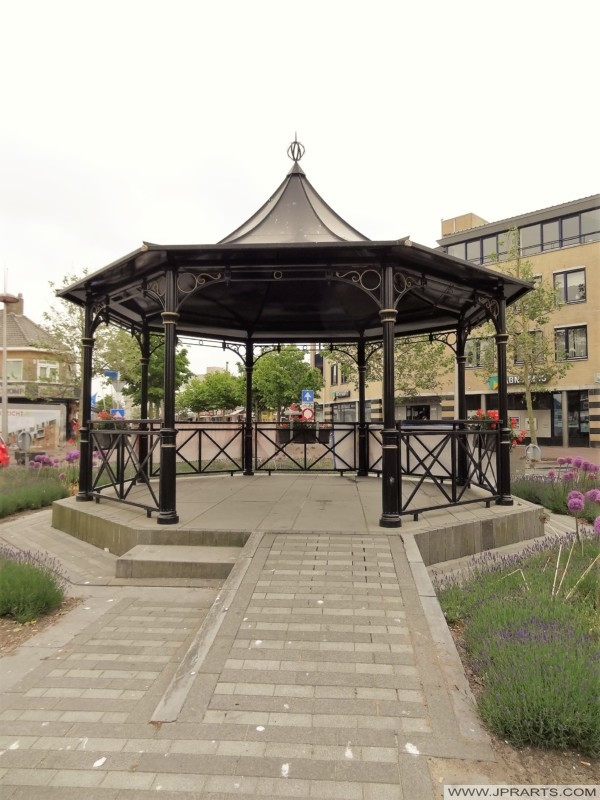
Bandstands in The Netherlands
Quioscos en los Países Bajos
Musikpavillons in den Niederlanden
The first European music kiosks arose in the eighteenth century and probably followed the example of Chinese and Ottoman pavilions. They were built of wood. The nineteenth century was the heyday of the kiosks and this continued until the early twentieth century. At that time, almost all Dutch cities and municipalities had bandstands, in which mainly fanfare orchestras, concerts bands and brass bands played. In the 1960s, a strong decline of newsstands began. A number of music kiosks were protected as monuments in the Netherlands.
荷兰的演奏台
Kiosques à Musique aux Pays-Bas
Музыкальные киоски в Нидерландах
One of the oldest bandstands in the Netherlands is located in Gouda. The expansion of the Houtmansplantsoen in the second half of the 19th century created space for organizing cultural events in the park. This idea fitted in with the concept of the city park at the time as a place where the modern city dweller could relax and as a place where the spiritual life could be brought to fruition. The bandstand built in the nineties of the 19th century is the tangible result of this. The building is also a reflection of the possibilities of industrial design in the second half of the 19th century. The bandstand, named Pavillon de Gouda according to the design from 1893, was designed in the so-called Neo-Dutch Renaissance style.
Muziekpaviljoens in Nederland
أكشاك الموسيقى في هولندا
Another old Dutch bandstand is in Amsterdam. Already during the plans for the construction of the Oosterpark in 1891, a bandstand was drawn up by Leonard Springer. A place had already been designated; at the pond (that pond crosses the entire park). The environment had to wait until Queen Wilhelmina of the Netherlands visited the Linnaeusbuurt in the late summer of 1898 as part of her inauguration. In 1903 an attempt was made for a new bandstand. It would take until 1907 before final plans for placement were discussed. It was only in November 1908 that the tender for “building an iron bandstand” in the park was awarded. The design then came from the Public Works Department.
Kioski Muzyczne w Holandii
Muzički Paviljoni u Holandiji
Visit Netherlands Travel to Book Flights and Hotels Cheap Online
Visit the Cheap Webshop for Blu-rays, Books and DVDs
Click Here for More Stock Photos and Videos


